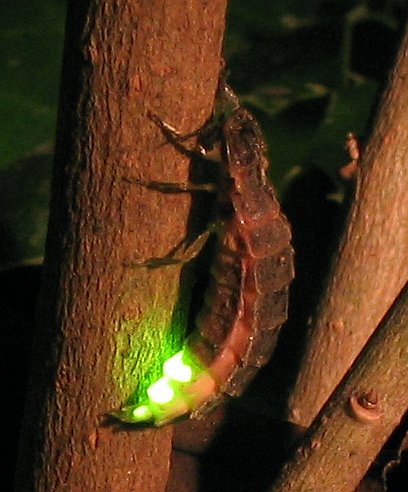|
Enewton
''Enewton'' is a genus in the family Cypridinidae. The genus contains bioluminescent species, and in particular is one of the Caribbean genera of bioluminescent ostracod Ostracods, or ostracodes, are a class of the Crustacea (class Ostracoda), sometimes known as seed shrimp. Some 70,000 species (only 13,000 of which are extant) have been identified, grouped into several orders. They are small crustaceans, typic ...s that perform stereotyped bioluminescent mating displays. References Bioluminescent ostracods Ostracod genera {{Crustacean-stub ... [...More Info...] [...Related Items...] OR: [Wikipedia] [Google] [Baidu] |
Cypridinidae
Cypridinidae is a family of ostracods, containing the following genera: *'' Amphisiphonostra'' Poulsen, 1962 *'' Azygocypridina'' Sylvester-Bradley, 1950 *'' Bathyvargula'' Kornicker, 1968 *'' Codonocera'' Brady, 1902 *'' Cypridina'' Milne-Edwards, 1840 *'' Cypridinodes'' Brady, 1902 *'' Doloria'' Skogsberg, 1920 *'' Enewton'' Cohen & Morin, 2010 *''Gigantocypris'' Skogsberg, 1920 *'' Hadacypridina'' Poulsen, 1962 *'' Isocypridina'' Kornicker, 1975 *'' Jimmorinia'' Cohen & Kornicker ''in'' Cohen, Kornicker & Iliffe, 2000 *'' Kornickeria'' Cohen & Morin, 1993 *'' Lowrya'' Parker, 1998 *'' Macrocypridina'' Skogsberg, 1920 *'' Maristella'' Reda et al., 2019 *'' Melavargula'' Poulsen, 1962 *'' Metavargula'' Kornicker, 1970 *'' Monopia'' Poulsen, 1962 *'' Paracypridina'' Poulsen, 1962 *'' Paradoloria'' Poulsen, 1962 *'' Paravargula'' Cohen & Kornicker, 1975 *'' Photeros'' Cohen & Morin, 2010 *'' Pseudodoloria'' Kornicker, 1994 *'' Pterocypridina'' Poulsen, 1962 *'' Rheina'' Kornicker ... [...More Info...] [...Related Items...] OR: [Wikipedia] [Google] [Baidu] |
Bioluminescence
Bioluminescence is the production and emission of light by living organisms. It is a form of chemiluminescence. Bioluminescence occurs widely in marine vertebrates and invertebrates, as well as in some fungi, microorganisms including some bioluminescent bacteria, and terrestrial arthropods such as fireflies. In some animals, the light is bacteriogenic, produced by symbiotic bacteria such as those from the genus '' Vibrio''; in others, it is autogenic, produced by the animals themselves. In a general sense, the principal chemical reaction in bioluminescence involves a light-emitting molecule and an enzyme, generally called luciferin and luciferase, respectively. Because these are generic names, luciferins and luciferases are often distinguished by the species or group, e.g. firefly luciferin. In all characterized cases, the enzyme catalyzes the oxidation of the luciferin. In some species, the luciferase requires other cofactors, such as calcium or magnesium ions, and s ... [...More Info...] [...Related Items...] OR: [Wikipedia] [Google] [Baidu] |
Ostracod
Ostracods, or ostracodes, are a class of the Crustacea (class Ostracoda), sometimes known as seed shrimp. Some 70,000 species (only 13,000 of which are extant) have been identified, grouped into several orders. They are small crustaceans, typically around in size, but varying from in the case of '' Gigantocypris''. Their bodies are flattened from side to side and protected by a bivalve-like, chitinous or calcareous valve or "shell". The hinge of the two valves is in the upper (dorsal) region of the body. Ostracods are grouped together based on gross morphology. While early work indicated the group may not be monophyletic and early molecular phylogeny was ambiguous on this front, recent combined analyses of molecular and morphological data found support for monophyly in analyses with broadest taxon sampling. Ecologically, marine ostracods can be part of the zooplankton or (most commonly) are part of the benthos, living on or inside the upper layer of the sea floor. While Myod ... [...More Info...] [...Related Items...] OR: [Wikipedia] [Google] [Baidu] |
Bioluminescent Ostracods
Bioluminescence is the production and emission of light by living organisms. It is a form of chemiluminescence. Bioluminescence occurs widely in marine vertebrates and invertebrates, as well as in some fungi, microorganisms including some bioluminescent bacteria, and terrestrial arthropods such as fireflies. In some animals, the light is bacteriogenic, produced by symbiotic bacteria such as those from the genus ''Vibrio''; in others, it is autogenic, produced by the animals themselves. In a general sense, the principal chemical reaction in bioluminescence involves a light-emitting molecule and an enzyme, generally called luciferin and luciferase, respectively. Because these are generic names, luciferins and luciferases are often distinguished by the species or group, e.g. firefly luciferin. In all characterized cases, the enzyme catalyzes the oxidation of the luciferin. In some species, the luciferase requires other cofactors, such as calcium or magnesium ions, and sometimes ... [...More Info...] [...Related Items...] OR: [Wikipedia] [Google] [Baidu] |


